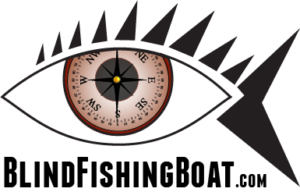Threading Fishing Line Through the Eyes of Hooks and Rod Guides
Lines come in many different colours and shapes. For the purpose of threading, one need only know that the braded lines thread easier when they are dryer and stiff, and the monofilaments slide better when a little wet. This is important as threading lighter lines through the eyes of fish hooks and other fishing equipment such as rod guides often involves using both hands and the tongue.
While it isn’t always necessary to use the tongue, when hands are cold and finger sensitivity is diminished, the tongue becomes an excellent helper due to its sensitivity. It’s services are also required when threading lighter lines that are both difficult to feel and uncooperative in that the end of lighter lines bend more easily.
Hold the hook or lure with one hand and the line with the other, and then use the tongue to feel the eye of the hook and the line. The tip of the tongue will assist in guiding the line through the eye of the hook. This method can also be used when threading line through rod guides or just about anything else.
Once the line has passed through the eye or guide, grasp the end of the line with the same hand holding the lure, hook, or rod so that you have a free hand to grasp the end of the line and pull it through the rest of the way.
Make sure you have plenty of slack so that the line doesn’t go tight on you at the wrong time and pull itself free from your hand and back through the eye of the hook or guides.
If you drop the line while threading rod guides, find the tip of the rod and seek out the line by feeling your way back down the rod until you find the line.
I recommend that you don’t leave your reel on cast however, as once you have fed the line through the eye of the hook or guides on the rod, your going to want to use the pressure from the rod to keep a slight tension on the line so that you can tie a knot. Set the drag on the reel to very light so that you can pull out line easily while threading. It’s much easier to feel line that has some tension.
When working with braded line, make sure to keep the tip of your tongue dry to avoid the braded line becoming limp and difficult to work with.
With heavier lines and larger eyes or guides one can use their fingers to guide the end of the line through the eye or guide. With heavier lines the end remains stiffer instead of laying flat, which is the case with thinner lines or wet braded line. However, once a person has become use to using their tongue as a sort of eye / finger tip, it becomes more natural to use it all the time. It is also more dependable as the times that your going to pull on the end of the line only to find out that it hasn’t passed through the eye or guide are almost zero as opposed to using ones fingers only.
The End.
